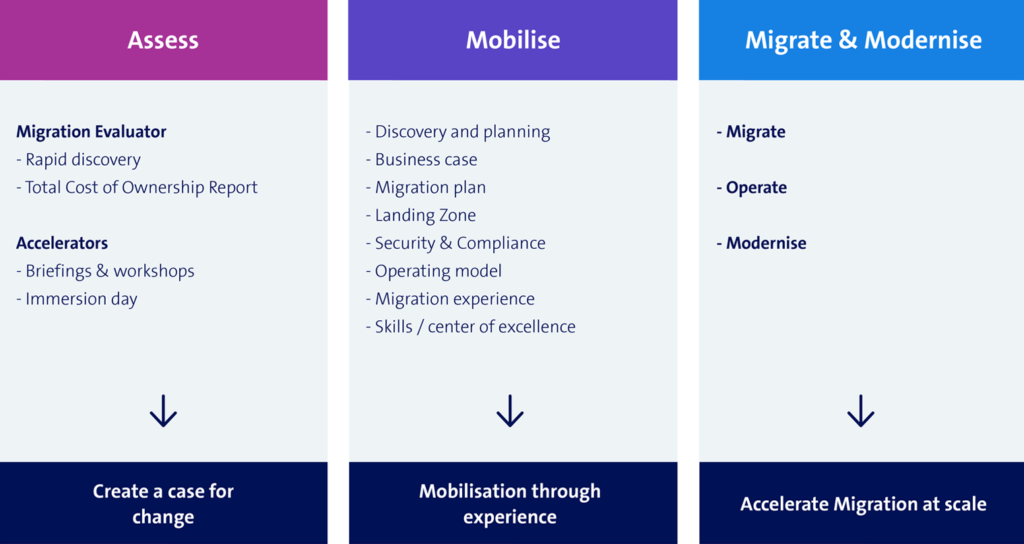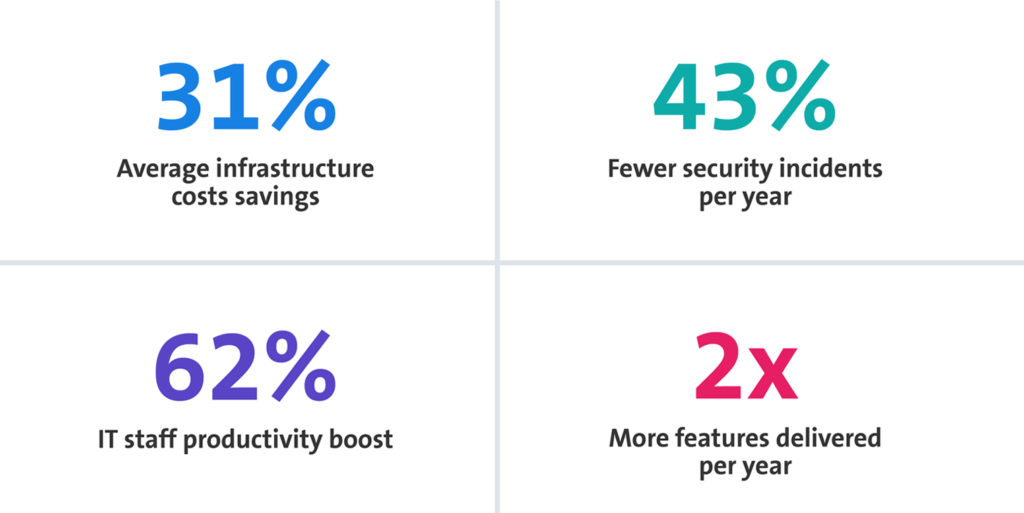Cloud migration projects make companies nervous – and rightly so. Too many projects become stalled or end up taking way too long. AWS has developed a structured approach for cloud migration that enables companies to save money, time and energy into migrating to the AWS Cloud rather than investing too much of these resources. From the outset, the program focuses on eliminating major obstacles – which surprisingly often include soft factors as well.
The AWS Migration Acceleration Program was developed independently by AWS and provides best practices guidelines for the efficient implementation of the migration project as well as support from certified cloud experts. The program provides resources for ensuring a smooth migration process. This series of articles focuses on the main aspects of the AWS Migration Acceleration Program.

‘Companies often tell us that they are struggling with their cloud migration. For example, it’s typical to hear them say, ‘It’s already taken way too long, the process is stalled, and we don’t understand why. And we’re wondering whether the direction we’ve taken will get us to the finish line.’ The AWS Migration Acceleration Program provides clarity, because you always know how much progress you’ve made, have a solid foundation for taking the next logical steps and benefit from faster implementation.’
Tristan Woerth, Cloud Architect at Swisscom
Good planning pays off
The tooling in the AWS Migration Acceleration Program is not limited to the technical phases of the migration. It also includes the planning and ‘soft’ factors. For example, it is key that managers be committed to the change process – it definitely requires leadership for the program to work. Over the past ten years, AWS has developed a whole range of methods to help companies navigate their path towards reaching goals and increasing the likelihood of success. The program essentially has three phases: assessment, mobilisation, migration and modernisation.
The three stages of the AWS Migration Acceleration Program
The structured migration process of the AWS Migration Acceleration Program has three phases that focus on successfully completing the AWS migration.
Phase 1: migration readiness assessment
Phase 2: mobilising resources
Phase 3: migrate and modernise

Taking a methodological approach can protect you against these risks
Cloud migration presents numerous challenges and risks, the most critical of which are:
- Shadow IT: if the migration is not carefully planned and implemented in a structured way, what IT departments often fear most becomes a reality. Because they still have to manage their daily tasks, however, they inevitably begin having a shadow IT problem. In turn, the migration becomes more complex because the initial set of circumstances changes and prevents transparency.
- Unrealistic cost estimates: during the migration process, the company passes through a phase in which high costs from the migration process are added to the existing infrastructure costs. It can be helpful, however, to start with a less cost-effective solution – provided this makes it possible to eliminate inflexible infrastructures and plan the subsequent phases with greater flexibility. This is why it must be clear from the beginning that reducing costs will only be realistic once the migration has been completed successfully. If the migration stagnates, the costs will increase over a longer period of time.
- Impatience: many companies want to take advantage of the benefits of the public cloud as quickly as possible and put too little time and effort into taking a methodical approach. This leads to poor planning, which stalls the process. The value for the business becomes much less attainable.
The AWS Migration Acceleration Program aims to resolve this problem methodically. What may sound tedious and like checklists is, in fact, quite useful. Keep reading to find out why.
Migrating data to the cloud always entails a cultural shift as well
At first, employees are faced with extra work. During the migration phase, they have to maintain the existing infrastructure while familiarising themselves with the cloud and migrating the first sets of tasks in order to evaluate the knowledge they have gained. Productivity gains only become tangible when the migration phase is complete. Only once the work has been ‘conceptualised’ anew – and digging in deep – can the company benefit. For this reason, employees from many different areas must be actively involved. If they are to contribute to the cultural shift, it is crucial to understand the various requirements and interests and to bring these into harmony.
Benefits: what companies can gain by migrating to the Amazon Cloud
Migration to the AWS Public Cloud takes some commitment – both financially and in terms of personnel. Thanks to a solid foundation of methods and specialists who are ready to assist, these investments pay off quickly. It is a worthwhile project because the experiences gained by companies that have successfully become settled in the cloud are compelling.
IDC, Nucleus Research and AWS Analysis surveyed hundreds of companies about the primary benefits they have realised by migrating to the cloud.

Next article in the AWS Cloud series

Getting started with the migration project: overall assessment with the migration readiness assessment
AWS start: the migration readiness assessment, which is part of the AWS Migration Acceleration Program, helps companies methodically navigate their way to gaining an overall…
Find out more about migrating to the AWS Cloud
AWS Cloud solutions from Swisscom
Here you can find out more about the AWS services Swisscom offers for design, implementation, migration and operation.

